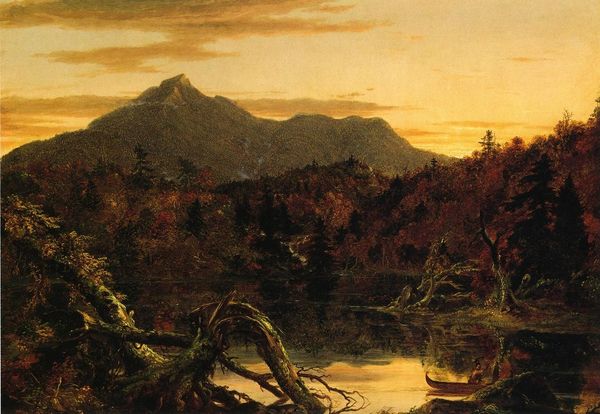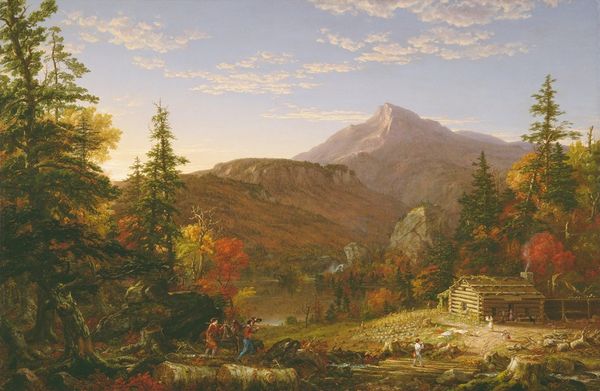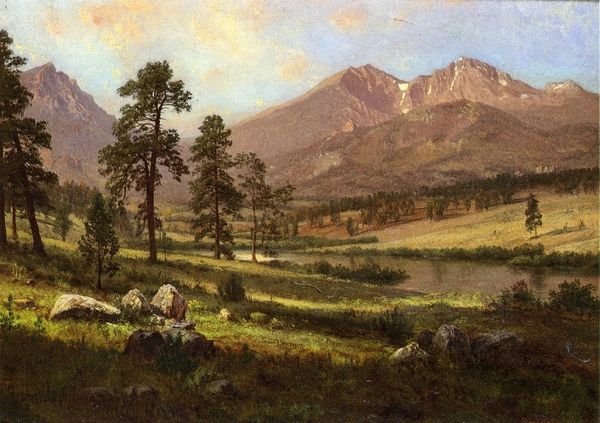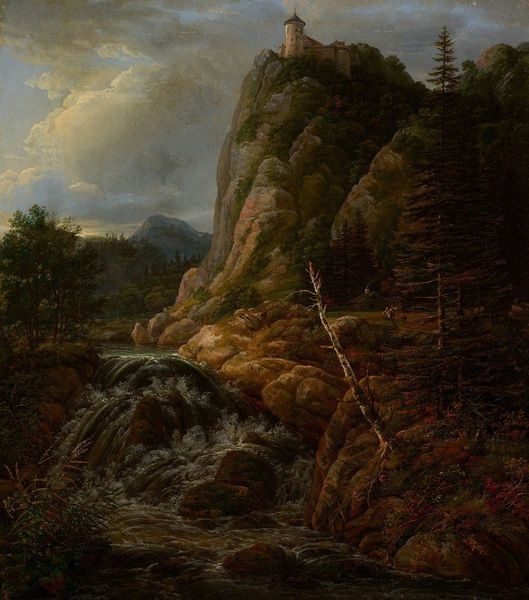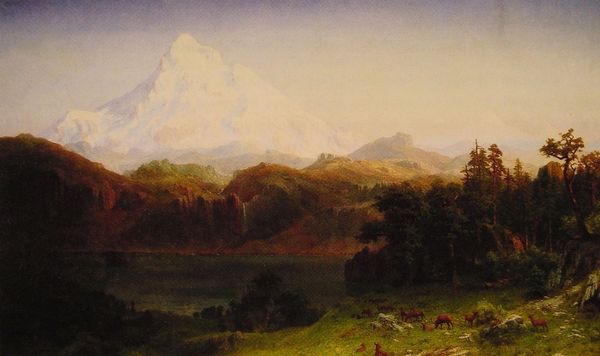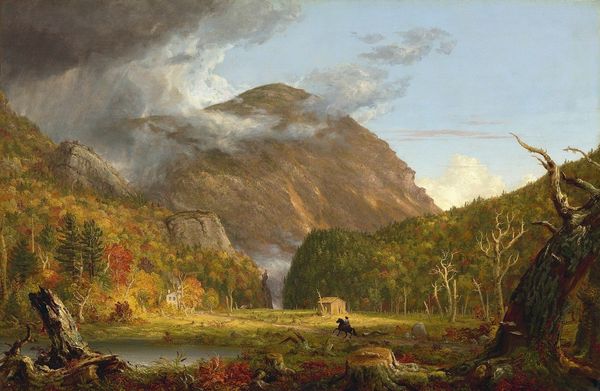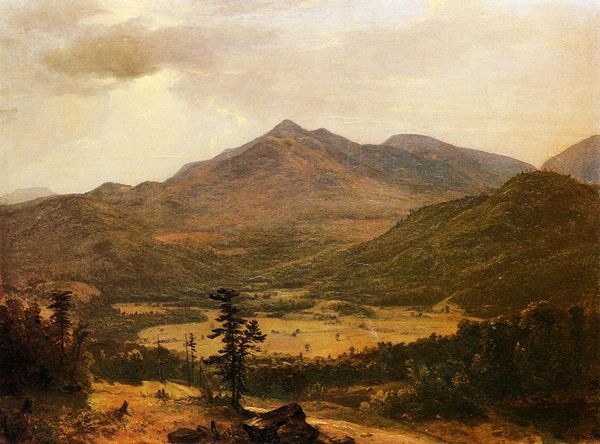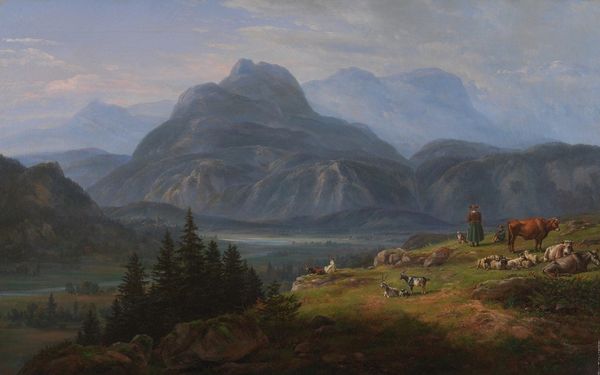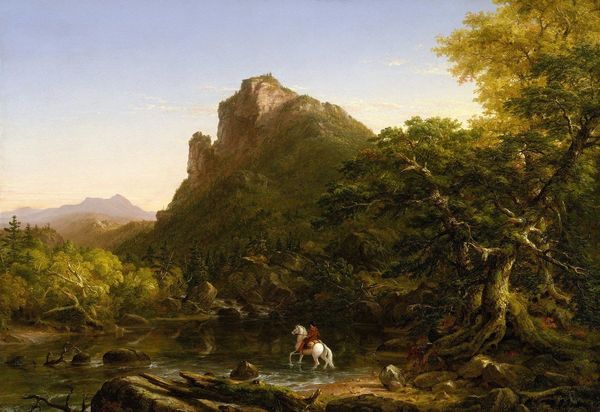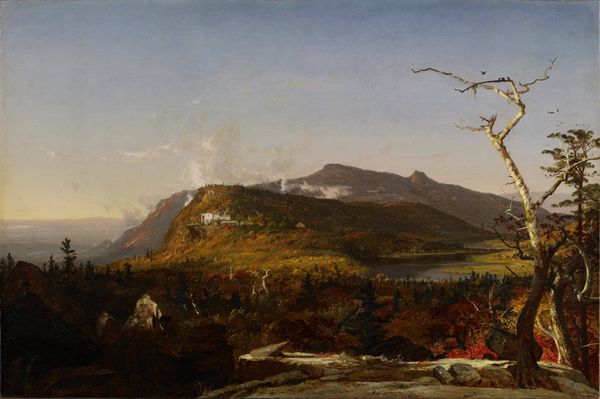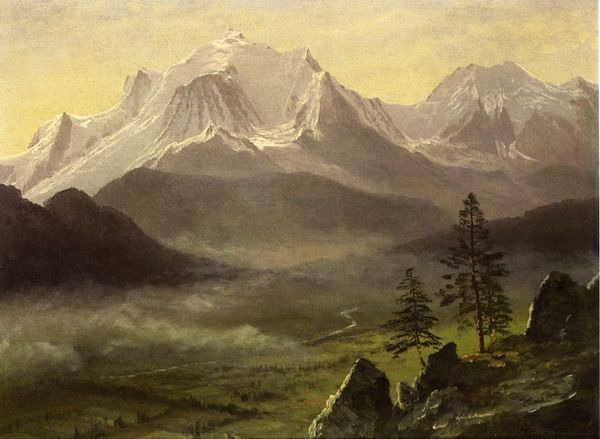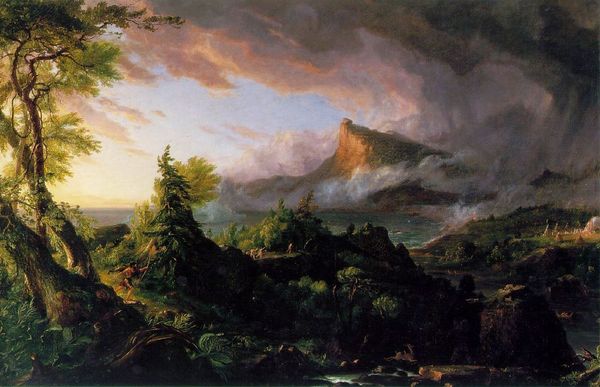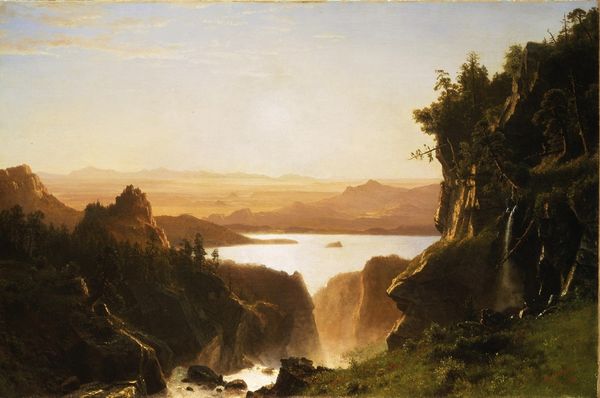
Corway Peak, New Hamshire 1844
0:00
0:00
thomascole
Maier Museum of Art (Randolph College), Lynchburg, VA, US
painting, oil-paint
#
tree
#
sky
#
painting
#
oil-paint
#
landscape
#
oil painting
#
forest
#
romanticism
#
mountain
#
natural-landscape
#
hudson-river-school
#
naturalism
#
nature
#
realism
Dimensions: 45.72 x 60.96 cm
Copyright: Public domain
Editor: So here we have Thomas Cole’s "Corway Peak, New Hampshire," from 1844, created with oil paint. The painting has this tranquil and awe-inspiring feel, but something about the people included makes it a bit melancholic to me. How do you interpret this work, seeing as he includes people in a nature scene? Curator: The inclusion of people—especially in relation to nature—is crucial for understanding Cole’s work. He was deeply concerned with the concept of Manifest Destiny and the impact of westward expansion on the American landscape. Notice how the figures seem small, almost insignificant, against the grandeur of the mountain. This could be interpreted as a commentary on the relationship between humanity and nature, and the potential for destructive transformation by human ambition. Editor: So, he’s using landscape to comment on these large-scale political and social issues of his time? Curator: Exactly! Landscape wasn't just about pretty scenery for Cole; it was a vehicle for exploring questions of national identity, progress, and the costs associated with it. Consider also the depiction of light, it's incredibly romantic. But what might that idealized view obscure from the realities of colonial expansion and displacement of Indigenous populations? Editor: I see what you mean. The beautiful scenery almost masks this criticism by presenting this perfect world and glossing over real concerns. What would you say we should take away from this painting, viewing it today? Curator: Perhaps a reflection on how landscape, even in its most beautiful form, can be entangled with power, privilege, and historical injustices. It challenges us to see beyond the aesthetic and to question whose stories are being told – and whose are being erased. Editor: It’s powerful how a landscape can actually reflect the political discourse of a certain time. Thank you for opening my eyes to the way Cole critiques through landscape paintings. Curator: It was my pleasure; art is always an expression of its time.
Comments
No comments
Be the first to comment and join the conversation on the ultimate creative platform.
